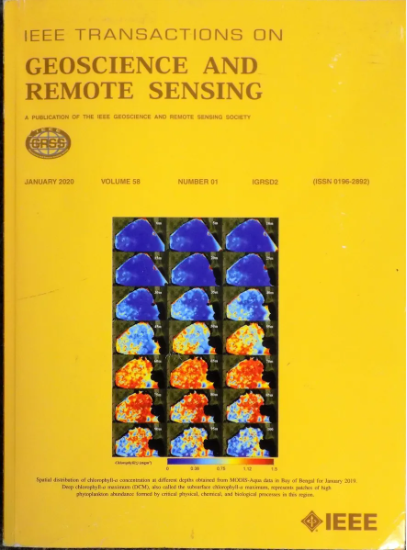Enhancement of Bayesian Seismic Inversion Using Machine Learning and Sparse Spike Wavelet: Case Study Norne Field Dataset
IF 7.5
1区 地球科学
Q1 ENGINEERING, ELECTRICAL & ELECTRONIC
IEEE Transactions on Geoscience and Remote Sensing
Pub Date : 2024-02-07
DOI:10.1109/TGRS.2024.3363632
引用次数: 0
Abstract
The concept of uncertainty is fundamental in seismic inversion modeling, as it pertains to the imprecision or lack of certainty inherent in the model’s results. In this work, we present a comprehensive study that integrates machine learning (ML), sensitivity analysis on well data, and the sparse spike wavelet to enhance to quality of Bayesian linearized inversion (BLI). Furthermore, sensitivity analysis was conducted to assess diverse combinations of attributes to facilitate the identification of the optimal model configuration and ensure robust results. Subsequently, the wavelet, obtained through the application of the sparse spike convolution on seismic data, was used to further augment the quality of results in the BLI process inversion. This wavelet yields a more precise and efficient representation of seismic events, enabling an enhanced quality in the interpretation of data in the Bayesian context of seismic information. By integrating the sparse spike wavelet with the well and seismic data, a substantial improvement in inversion quality is achieved compared to the initial inversion performed using the original well data and the Ricker wavelet. The combination of ML, sensitivity analysis, and sparse spike wavelet in the BLI inversion process generates results that are more precise and reliable, facilitating well-informed decision-making in the exploration of underground resources. In our analysis, we applied the BLI inversion process in real data from the Norne Field in the North Sea, Norway.利用机器学习和稀疏尖峰小波增强贝叶斯地震反演:诺尔内油田数据集案例研究
不确定性的概念是地震反演建模的基础,因为它涉及到模型结果中固有的不精确或缺乏确定性。在这项工作中,我们提出了一项综合研究,将机器学习(ML)、井数据敏感性分析和稀疏尖峰小波整合在一起,以提高贝叶斯线性化反演(BLI)的质量。此外,还进行了灵敏度分析,以评估各种属性组合,从而确定最佳模型配置,确保获得稳健的结果。随后,通过对地震数据应用稀疏尖峰卷积得到的小波被用于进一步提高贝叶斯线性化反演过程的结果质量。这种小波能更精确、更有效地表示地震事件,从而提高在贝叶斯地震信息背景下解释数据的质量。通过将稀疏尖峰小波与油井和地震数据相结合,与使用原始油井数据和 Ricker 小波进行的初始反演相比,反演质量有了大幅提高。在 BLI 反演过程中结合使用 ML、灵敏度分析和稀疏尖峰小波,可以得到更加精确和可靠的结果,有助于在地下资源勘探中做出明智的决策。在分析中,我们将 BLI 反演过程应用于挪威北海 Norne 油田的实际数据。
本文章由计算机程序翻译,如有差异,请以英文原文为准。
求助全文
约1分钟内获得全文
求助全文
来源期刊

IEEE Transactions on Geoscience and Remote Sensing
工程技术-地球化学与地球物理
CiteScore
11.50
自引率
28.00%
发文量
1912
审稿时长
4.0 months
期刊介绍:
IEEE Transactions on Geoscience and Remote Sensing (TGRS) is a monthly publication that focuses on the theory, concepts, and techniques of science and engineering as applied to sensing the land, oceans, atmosphere, and space; and the processing, interpretation, and dissemination of this information.
文献相关原料
| 公司名称 | 产品信息 | 采购帮参考价格 |
|---|
 求助内容:
求助内容: 应助结果提醒方式:
应助结果提醒方式:


